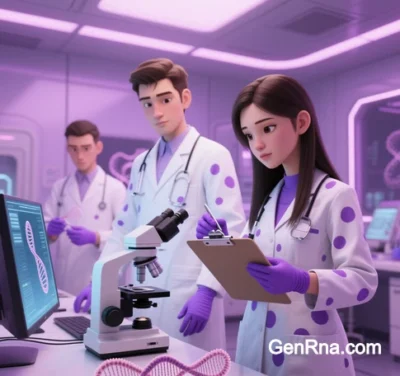 Chromosome Functions: Guardians and Transmitters of Genetic Information
Chromosome Functions: Guardians and Transmitters of Genetic Information
Chromosomes are intricately organized structures within the nucleus of eukaryotic cells, composed of DNA, histone proteins, and non-histone proteins. They serve as the primary vehicles for storing, transmitting, and regulating genetic information, ensuring the continuity of life across generations. Below, we explore their critical roles in cellular and organismal biology.
1. Storage and Transmission of Genetic Information
Chromosomes act as repositories for genetic material, housing DNA molecules that encode the blueprint for life. Each chromosome contains thousands of genes—discrete DNA sequences that dictate traits ranging from biochemical pathways to physical characteristics. During DNA replication, chromosomes ensure precise duplication of genetic material, enabling accurate inheritance during cell division .
Image suggestion: Illustration of a chromosome’s DNA-histone complex, highlighting nucleosomes and chromatin fibers.
2. Precision in Cell Division
Chromosomes are indispensable for mitosis and meiosis, processes that distribute genetic material to daughter cells. Key functions include:
- Mitosis: Chromosomes condense into visible structures, align at the metaphase plate, and segregate into daughter cells, ensuring each receives an identical genome .
- Meiosis: Homologous chromosomes pair and undergo recombination, generating genetic diversity in gametes. Errors in chromosome segregation (e.g., nondisjunction) can lead to conditions like Down syndrome .
Image suggestion: Schematic of mitotic stages, emphasizing chromosome condensation, alignment, and separation.
3. Regulation of Gene Expression
Chromosomes dynamically regulate gene activity through epigenetic modifications and spatial organization:
- Epigenetic Marks: Histone acetylation and DNA methylation modulate chromatin accessibility, silencing or activating genes .
- 3D Architecture: Chromosome looping brings enhancers and promoters into proximity, enabling tissue-specific gene expression .
Image suggestion: Heatmap showing chromatin accessibility and gene expression patterns across chromosome regions.
4. Facilitation of Genetic Diversity
- Homologous Recombination: During meiosis, crossovers between homologous chromosomes reshuffle alleles, driving evolutionary adaptation .
- Chromosomal Mutations: Structural changes (e.g., translocations, inversions) contribute to genetic variation, though some may cause diseases like leukemia .
Image suggestion: Diagram of crossover events between homologous chromosomes during prophase I of meiosis.
5. Protection and Stability of DNA
- Telomeres: Specialized structures at chromosome ends prevent DNA degradation and fusion. Telomerase activity in germ cells counteracts shortening during replication .
- DNA Repair: Chromosomes recruit repair proteins to sites of damage (e.g., double-strand breaks), maintaining genomic integrity .
Image suggestion: Close-up view of telomeres and associated shelterin complexes protecting chromosome ends.
6. Role in Development and Differentiation
Chromosomes orchestrate cellular differentiation by selectively activating developmental genes. For example:
- X Chromosome Inactivation: In female mammals, one X chromosome is silenced to balance gene dosage between sexes .
- Chromatin Remodeling: Pluripotent stem cells undergo large-scale chromatin reorganization to adopt specialized functions .
Image suggestion: Fluorescence micrograph showing Barr bodies (inactivated X chromosomes) in female cells.
7. Chromosomal Abnormalities and Disease
- Aneuploidy: Extra or missing chromosomes (e.g., trisomy 21) disrupt development, leading to congenital disorders .
- Translocations: Exchange of chromosome segments (e.g., Philadelphia chromosome in CML) can activate oncogenes .
Image suggestion: Karyotype highlighting chromosomal abnormalities such as trisomy 21 or translocations.
Conclusion
Chromosomes are not mere static carriers of DNA but dynamic entities that govern life’s molecular processes. From safeguarding genetic information to enabling evolutionary innovation, their functions underpin both the stability and adaptability of living systems. Advances in genomics and cryo-electron microscopy continue to unveil their complexities, offering insights into diseases and biotechnological applications.
Data Source: Publicly available references.
Contact: chuanchuan810@gmail.com




